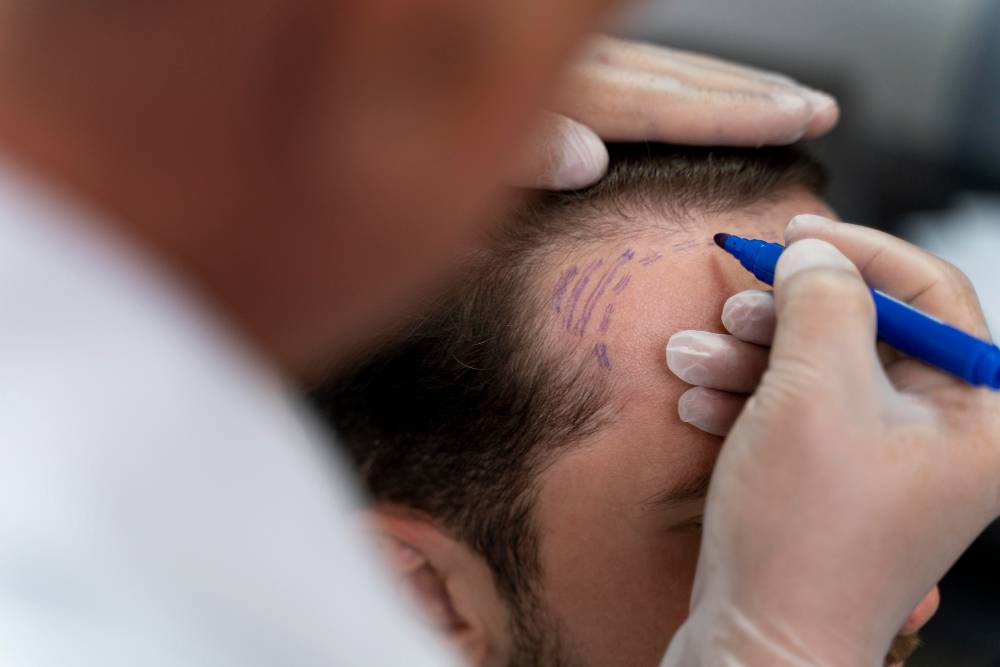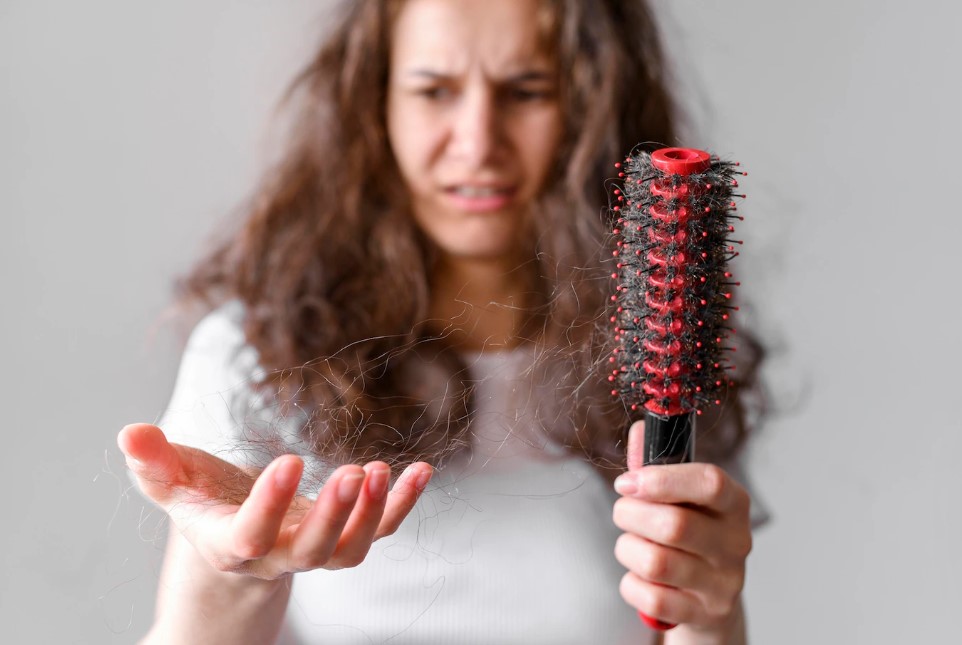Tattooing is the process of creating a permanent mark or design on the skin using ink and a needle. The ink is inserted into the skin using a handheld machine that punctures the skin repeatedly, depositing the ink into the dermis, the second layer of the skin. The process of tattooing has been around for centuries and has been practiced by many cultures around the world. There are many different styles of tattooing, and tattoo artists can create a wide variety of designs, ranging from simple lines to complex, detailed images. Tattooing is generally safe when it is performed by a trained and licensed tattoo artist, but as with any medical procedure, there are some risks involved, including infection, allergic reaction to the ink, and scarring.
Tattooing has been practiced for thousands of years by cultures around the world. The oldest known tattoo was discovered on the skin of a mummified human dating back to approximately 3370 BC. Tattooing has traditionally been used as a form of body modification and decoration, as well as a means of conveying social status, tribal identity, and spiritual beliefs.
Tattooing techniques and designs have varied widely over time and across different cultures. In ancient societies, tattoos were often created using simple tools, such as sharpened bones or sticks, and pigment was made from materials such as ash, soot, and plant dyes. In more recent times, tattooing has been performed using electric tattoo machines, which use a needle to inject ink into the skin at a high speed.
Tattooing has undergone various periods of acceptance and rejection in different societies throughout history. In some cultures, tattoos have been associated with marginalized groups or have been used as a form of punishment, while in others they have been embraced as a form of art and self-expression. Today, tattooing is a popular form of body modification that is practiced globally.
What id Scalp Micropigmentation?
Scalp micropigmentation is a non-surgical cosmetic procedure in which pigment is applied to the scalp to create the appearance of fuller, thicker hair. It is often used to help camouflage hair loss or thinning hair, or to create the look of a buzz cut or shaved head. The procedure involves injecting pigment into the scalp using a handheld device, similar to a tattoo gun. Scalp micropigmentation is considered a permanent treatment, although the pigment may fade over time and touch-up treatments may be needed. It is generally safe, but as with any medical procedure, there are some risks involved, including infection, allergic reaction to the pigment, and scarring.

Scalp Micropigmentation, an advanced scalp tattooing procedure
In summary, scalp micropigmentation and scalp tattooing are terms that are often used interchangeably to refer to the same procedure, which involves the injection of pigment into the scalp to create the appearance of fuller, thicker hair.
Scalp tattooing is a term that is sometimes used to refer to the same procedure as scalp micropigmentation. However, “tattoo” is more commonly used to refer to the injection of ink into the skin using a needle, while “micropigmentation” refers to the use of pigment to create a cosmetic effect. In the context of scalp treatment, “scalp micropigmentation” is a more accurate term, as it involves the use of pigment rather than ink.
Scalp Micropigmentation (SMP) is a specialized form of tattooing that uses tiny needles and organic pigments to create the illusion of a full head of hair. The pigment is applied directly to the dermal layer of the skin with precise placement, which gives the appearance of a shaved or buzzed hairstyle. Unlike traditional scalp tattoos, SMP does not use permanent ink and instead requires touch-up treatments over time to maintain the desired look. Additionally, scalp Micropigmentation is much less invasive than a traditional tattoo. As with any type of tattooing procedure, the results of SMP can be unpredictable and require regular maintenance to maintain its desired look.
Another difference between scalp Micropigmentation and scalp tattooing is that the pigments used in SMP are water-soluble, meaning that they can be safely removed with a saline solution should an individual decide it is not the look they want. Traditional scalp tattoos, on the other hand, are permanent and can be very difficult to remove.
Male Pattern Baldness

Male pattern baldness, also known as androgenetic alopecia, is a common type of hair loss that affects many men as they age. It is characterized by a receding hairline and thinning of the hair on the top and front of the head. Male pattern baldness is caused by a combination of genetics and hormones. It is thought to be influenced by male hormones called androgens, which play a role in the development of male characteristics such as facial hair and a deeper voice.
Men with male pattern baldness have hair follicles that are sensitive to the effects of androgens, particularly dihydrotestosterone (DHT). DHT causes the hair follicles to shrink, leading to thinner and shorter hairs. Over time, the hair follicles can become so small that they are no longer able to produce new hair. Male pattern baldness is usually inherited, so if your father or grandfather experienced hair loss, you may be more likely to develop it as well.
Other factors that may contribute to male pattern baldness include:
- Aging: Hair loss tends to be more common in older men.
- Medical conditions: Certain medical conditions, such as an underactive thyroid gland or iron deficiency anemia, can cause hair loss.
- Medications: Some medications, such as certain blood pressure drugs and antidepressants, can cause hair loss as a side effect.
- Stress: Physical or emotional stress can lead to temporary hair loss.
- Poor nutrition: A diet that is low in protein and iron can contribute to hair loss.
- Trauma: Physical trauma to the scalp, such as a burn or scar, can damage hair follicles and lead to hair loss.
Female Pattern Baldness
Female pattern baldness, also known as androgenetic alopecia, is a common type of hair loss that affects many women as they age. It is characterized by thinning of the hair on the top and front of the scalp, and a widening part. Female pattern baldness is caused by a combination of genetics and hormones. It is thought to be influenced by male hormones called androgens, which play a role in the development of male characteristics such as facial hair and a deeper voice.
Women with female pattern baldness have hair follicles that are sensitive to the effects of androgens, particularly dihydrotestosterone (DHT). DHT causes the hair follicles to shrink, leading to thinner and shorter hairs. Over time, the hair follicles can become so small that they are no longer able to produce new hair. Female pattern baldness is usually inherited, so if your mother or grandmother experienced hair loss, you may be more likely to develop it as well.
Female pattern baldness tends to be less severe than male pattern baldness and may not result in complete baldness. It is also more likely to affect women after menopause, when levels of androgens in the body tend to increase.
Other factors that may contribute to female pattern baldness include:
- Medical conditions: Certain medical conditions, such as an underactive thyroid gland or iron deficiency anemia, can cause hair loss.
- Medications: Some medications, such as certain blood pressure drugs and antidepressants, can cause hair loss as a side effect.
- Stress: Physical or emotional stress can lead to temporary hair loss.
- Poor nutrition: A diet that is low in protein and iron can contribute to hair loss.
- Trauma: Physical trauma to the scalp, such as a burn or scar, can damage hair follicles and lead to hair loss.

Hair Loss and Stress
Stress can have a number of negative effects on physical and mental health, and hair loss is one potential consequence. Stress can cause a type of hair loss called telogen effluvium, which occurs when the hair growth cycle is disrupted and hair falls out prematurely.
During the normal hair growth cycle, hair grows for a period of time (anagen phase) before entering a resting phase (telogen phase). At the end of the telogen phase, the hair falls out and is replaced by new hair. Stress can cause the hair to enter the telogen phase prematurely, leading to hair loss. This type of hair loss is usually temporary and can be triggered by a variety of stressors, such as major life changes, illness, or physical or emotional trauma.
If you are experiencing hair loss and suspect that it may be due to stress, it is important to take steps to manage your stress levels. Some strategies that may help include:
Exercise: Physical activity can help to reduce stress and improve overall health.
- Relaxation techniques: Practices such as meditation, deep breathing, and yoga can help to calm the mind and reduce stress.
- Good sleep habits: Getting enough rest can help to reduce stress and improve overall health.
- Healthy diet: Eating a well-balanced diet that includes plenty of fruits, vegetables, and proteins can help to support overall health and reduce stress.
- Support: Seeking support from friends, family, or a mental health professional can help to manage stress and improve overall well-being.
- If you are experiencing significant hair loss or are concerned about your hair loss, it is important to speak with a healthcare provider for proper diagnosis and treatment.
Hair Loss Treatment by PRP

Platelet-rich plasma (PRP) therapy is a medical treatment in which a concentrated solution of platelets is injected into the scalp. Platelets are a type of blood cell that contain growth factors, which are proteins that help to stimulate cell growth and healing. PRP therapy is sometimes used to treat hair loss, as it is believed that the growth factors in platelets may help to stimulate the growth of new hair and improve the health of the existing hair.
PRP therapy for hair loss is typically performed in a series of treatments, with each treatment spaced several weeks apart. The treatment involves drawing a small amount of the patient’s blood and separating the platelets from the other blood cells using a centrifuge. The concentrated solution of platelets is then injected into the scalp. The procedure is typically performed using a local anesthetic to numb the area and is generally well-tolerated by patients.
PRP therapy for hair loss is considered a safe and effective treatment option, but it is important to note that the results may vary from person to person and are not guaranteed. Some people may notice an improvement in the thickness and density of their hair after PRP therapy, while others may not see a significant change. It is also important to note that PRP therapy is not a permanent solution to hair loss and regular maintenance treatments may be needed to maintain the results.
Minoxidil solution for Hair Loss Control
Minoxidil is a medication that is used to treat hair loss. It is available in both topical and oral forms and is most commonly used to treat male pattern baldness and female pattern baldness.
Topical Minoxidil is a solution that is applied to the scalp twice a day. It is thought to work by widening the blood vessels in the scalp and increasing blood flow to the hair follicles, which may help to stimulate hair growth. Minoxidil is available over the counter in a 2% solution for women and a 5% solution for men. It is generally well-tolerated, but some people may experience side effects such as dryness or flakiness of the scalp, itching, and redness.
Oral Minoxidil is a pill that is taken by mouth. It is generally used to treat high blood pressure, but it can also be used off-label to treat hair loss. Oral Minoxidil may be more effective at stimulating hair growth than the topical form, but it can also cause more serious side effects, such as dizziness, fainting, and rapid heartbeat. Oral Minoxidil should only be used under the supervision of a healthcare provider.
Minoxidil is generally effective at slowing or stopping hair loss and may help to stimulate new hair growth in some people. However, the results of Minoxidil treatment may vary from person to person and are not guaranteed.
Hair Transplant and Complementary Scalp Micropigmentation

Besides, of several hair treatment procedures such as PRP, low-level laser, vitamins, and tonics like Minoxidil, hair transplant is a popular surgical procedure with a fast and certain result. A hair transplant is a surgical procedure in which hair is taken from one part of the body (the donor site) and transplanted to a bald or balding area (the recipient site). There are several techniques that can be used to perform a hair transplant, but the most common method is called follicular unit transplantation (FUT).
During an FUT procedure, a strip of skin is removed from the donor site (usually the back of the head) and dissected into individual hair follicles. The hair follicles are then implanted into small incisions made in the recipient site. The procedure is performed under local anesthesia and can take several hours to complete, depending on the number of grafts being transplanted. After the procedure, the transplanted hair will fall out within a few weeks, but new hair should begin to grow within a few months. It may take several months to a year for the final results to be visible.
Hair transplant scarring is a common concern for many people considering a hair transplant. The type and extent of scarring can vary depending on the technique used and the individual’s healing process.
FUT procedures typically result in a linear scar at the donor site, which can be hidden by the remaining hair. Some people may choose to wear their hair longer to cover the scar, while others may opt for scar revision surgery to minimize the appearance of the scar. Other hair transplant techniques, such as follicular unit extraction (FUE), do not involve the removal of a strip of skin and may result in less noticeable scarring. However, FUE procedures can be more time-consuming and may result in more overall scarring due to the need to make many small incisions.
Scalp Micropigmentation after hair transplant is becoming more and more popular. SMP is a cosmetic procedure in which pigment is applied to the scalp to create the appearance of fuller, thicker hair. It is often used to help camouflage hair loss or thinning hair, or to create the look of a buzz cut or shaved head. SMP can be used in conjunction with hair transplant surgery to help enhance the overall appearance of the transplanted hair.
After a hair transplant, it is common for the transplanted hair to shed within the first few weeks. As the new hair begins to grow, it may appear thin and wispy. SMP can be used to create the illusion of a fuller, thicker head of hair by adding pigment to the scalp in between the transplanted hairs. This can help to improve the overall appearance of the transplanted hair and create a more natural-looking result. SMP is a perfect procedure to camouflage scars on the scalp, including those resulting from hair transplant surgery.
Tattoo Removal Difficulties

scalp tattoo removal is not an easy task . It requires a skilled dermatologist who has experience in performing the procedure safely and with minimal scarring. The process can take several sessions to complete, depending on the size and location of the tattoo, as well as the type of ink used.
There are several factors that can affect the difficulty of tattoo removal, including the age of the tattoo, the size and location of the tattoo, the colors used in the tattoo, the amount of ink used, and the depth at which the ink was applied. Other factors that can impact the difficulty of tattoo removal include the individual’s skin type, the individual’s overall health, and the individual’s immune system. Some tattoos may be more difficult to remove than others, and multiple treatments may be necessary to fully remove the tattoo. If you are considering tattoo removal, it is important to consult with a qualified healthcare provider who can evaluate the specific characteristics of your tattoo and advise you on the best course of treatment.
The main difference between scalp micropigmentation and scalp tattoo is that scalp micropigmentation deposits pigment into the dermal layer of the skin, while scalp-tattooing deposits pigment into the epidermis. Therefore, tattooing is more permanent and there is no easy way to modify, redo or remove it. Scalp tattooing is also typically done with a much heavier hand, which can lead to a more noticeable and permanent result. Scalp micropigmentation uses pigment to simulate the look of hair follicles, while scalp tattooing uses needles to insert ink into the skin (like coloring an area without a natural pattern and look).
Scalp Micropigmentation Advantages
Scalp micropigmentation (SMP) is a cosmetic procedure in which pigment is applied to the scalp to create the appearance of hair follicles. It is often used to help cover up bald spots or to create the appearance of a fuller head of hair. Some of the potential advantages of scalp micropigmentation include:
- Non-invasive: SMP is a non-surgical procedure that does not involve incisions or the use of anaesthesia.
- Quick: The procedure can typically be completed in a few hours, depending on the size of the area being treated.
- Natural-looking results: The pigment used in SMP is carefully matched to the individual's natural hair color, resulting in a natural-looking appearance.
- Long-lasting: The results of SMP can last for several years, although touch-ups may be necessary to maintain the desired look.
- Suitable for all hair types: SMP can be used on people with all hair types and textures, and can be customized to match the individual's natural hair pattern.
It is important to note that SMP is not a permanent solution and the results will fade over time. If you are considering scalp micropigmentation, it is important to consult with a qualified SMP artist who can help you understand the potential risks and benefits of the procedure.

Scalp Micropigmentation Aftercares
After having scalp micropigmentation (SMP), it is important to follow proper aftercare instructions to ensure the best possible results. Here are some general recommendations:
Keep the treated area clean: Gently wash the treated area with a mild, unscented soap and lukewarm water once a day. Avoid using hot water or rubbing the area too vigorously, as this can irritate the skin. Avoid sweating and moisture: Avoid activities that cause heavy sweating for the first week after the procedure. This includes exercising and saunas. If you do sweat, gently pat the area dry with a clean towel. Avoid swimming for at least two weeks after the procedure.
Protect the treated area from the sun: Avoid exposing the treated area to the sun for the first few weeks after the procedure. If you do need to go outside, be sure to wear a hat or use a high SPF sunscreen to protect the treated area. Avoid picking or scratching: Do not pick or scratch the treated area, as this can cause the pigment to become uneven or patchy.
Avoid using hair products: Avoid using hair products, such as gels or sprays, on the treated area for the first week after the procedure. It is important to follow your healthcare provider’s specific aftercare instructions, as they may have additional recommendations based on your individual needs. If you have any concerns or questions about your aftercare, be sure to speak with your SMP specialist or clinic.
Golden Pulse Academy Toronto A Five Star SMP Center
Golden Pulse Academy Toronto is a five-star scalp micropigmentation in Toronto. Our team of experienced professionals and a master trainer offer a wide range of permanent makeup services as well as SMP for a wide range from natural hairline restoration to full scalp coverage for hair loss concealment. We use the latest technology and techniques, including organic pigments, 3D mapping, and advanced shading techniques to achieve the most natural and realistic results possible.
We offer training courses for those looking to break into this exciting industry and become certified SMP technicians. Our comprehensive course includes both online learning materials and in-person instruction from leading experts in the field. We provide a safe and welcoming learning environment, with all materials supplied so that you can get the most out of your course. Upon completion, students will receive a certification as an SMP technician and be able to work with confidence in this new field.
We also offer a variety of services for those looking for permanent makeup solutions, such as eyebrow tattoos and lip blush tattoos. Our professionals use only the highest-quality pigments to ensure the results are vibrant and long-lasting. We also offer medical tattooing for people suffering from alopecia, scar camouflage, and vitiligo. Our experienced team is here to guide you in your quest for the perfect solution for your specific needs.
At Golden Pulse Academy Toronto, we strive to provide only the best service and highest quality results in the Toronto area. We believe in delivering superior customer service and making sure our clients are happy with their experience and results. Our team of experts is here to answer any questions you may have throughout your journey and ensure that your SMP or permanent makeup session is an enjoyable one. Contact us today to learn more about our services and to set up an appointment. We look forward to helping you feel and look your best!